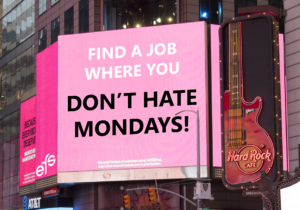The One with the Pivot
“Pivot…pivaat… PIVAAAT!” In the infamous words of Dr. Ross Geller, the only academic in the Friends group, one of the most overused, yet understated words in higher education right now might be “pivot.” Unfortunately, unlike the episode where Ross and company try (and fail in spectacular fashion) to get a couch up a narrow, twisting stairwell, this isn’t just about moving furniture.
As Spring 2020 ended, the higher education community closed the door on “The One with the Pivot.” This semester held more surprises than any other semester in living history. While at the beginning of the semester, a mysterious pneumonia-like illness was just becoming known half a world away, after spring break, we were sheltering in place and striving to continue education from behind a computer screen. The newly named COVID-19 came to visit our campuses and upended everyone’s lives.
As the higher education community begins to consider the spring 2020 semester “pivot” and its educational implications and economic fallout, is that – in fact – what we were doing? Is suddenly changing methods of information delivery just a “pivot” or should I keep hearing Chandler Bing yelling “shut up” from the stairway?

Over the second half of the semester, university and K-12 educators across the country and around the world have adapted to this new abnormal along with the rest of humanity. Our collective new situation, of purposeful physical isolation, Zoom meetings, meetings that really are now an email, and ever-increasing screen time has been characterized by a sense of resilience in some sectors and denial in others.
The suddenness of the change may be what leads to the pivot moniker. For me, I left an evening university event and two hours later announced to my classes that we would be meeting on Zoom the following day until further notice.
I was, perhaps, overly optimistic. The “further notice” never happened. Like every other course, we finished the semester remotely and are looking ahead to the summer and fall for what’s next. This was not our day, week, month or – perhaps – even our year.
Tech savvy and non-tech savvy academics and staff have embraced new or new-to-them technologies. From an educational perspective, we might consider this a pivot. We were changing directions from central point. This central point was our known. We forged this path for the early weeks of the semester and had laid the course from however many semesters we each had been, or been involved with, teaching. We recorded approximately half of a semester in the gradebooks in our “normal.”
More accurately than simply a “pivot,” academic institutions, instructors, and instructional designers rapidly reimagined the educational experience in order to continue the semester. Instead of taking a break and restarting the spring semester at an indefinite time in the future, higher education sought to continue offering the courses that students needed to complete their semester, finish their degree, and work towards their goals.
Instructors everywhere, supported by their colleagues, instructional designers, academic staff, and centers for teaching excellence, began hastily exploring new methods of delivering in-person course content. In many cases, this happened via Zoom or similar meeting platforms. Many classes, including mine, went remotely synchronous overnight.
In higher education, we talk constantly about “active learning,” generally a catch-all phrase for engaging teaching and learning strategies. As instructors moved to teaching through a webcam, we have seen a fascinating exploration of ways to adapt in-person active learning strategies in a computer-facilitated setting. Zoom and similar programs can be useful for many of the same strategies that we use in the classroom – think-pair-share, small group discussion, questions and polling, exploring case studies, group work, and so many others. Student presentations – from classroom presentations to research poster sessions and all the way to masters and PhD defenses – happened remotely. Schools and universities around the country planned and hosted graduation ceremonies, accomplishment celebrations, and other hallmarks of the educational experience by computer. These remote sessions have been joined by family members and friends physically separated but together in celebration of accomplishments and achievement, but most importantly – resilience. They’ve joined the “pivot” too.
The transition to remote class sessions was fraught with issues. Whether it was Zoombombers, the added layers of security to combat them, or simply spotty, overloaded internet service, quickly reimagining in-person sessions in a remote format was not a smooth process. The already known equity issues in higher education may have been further reinforced while new ones popped up. Whether these were illnesses, caregiving, childcare, work-from-home isolation, or family issues, everyone associated with higher education had their spring semester upended in a major way.
As academics in our “pivot,” like Ross, Rachel, and Chandler, we could have cut the couch in half to get it up the stairs. We could have taken it back to the store for our paltry refund. The semester could have been suspended until humanity comes to terms with the new reality of what a pandemic truly means. We could have given up on learning goals and helping our students achieve their professional aspirations by just giving any grade… but preferably an “A.”
From an educational perspective, we certainly didn’t create true online courses during the overnight transition from in-person to remote delivery. Online courses take time and thoughtful preparation to align content, objectives, and methods of delivery, just as in-person courses do. Instead, course instructors around the world creatively reimagined how the same information, the student learning outcomes, the course objectives, or competencies could be met through some sort of alternative approach.
Unfortunately, the close of “The One with the Pivot” began with headlines of students organizing and suing universities and demanding money back because the courses were “online,” when likely, they were simply remote for a portion of the semester for everyone’s safety. Regardless, teaching and learning from home would not have been what anyone would have imagined for the semester.
This “pivot” will be characterized by the skyscraper of effort put in by everyone across job titles to enable this transition and for students to be able to finish the semester or finish their degrees. This semester, I had the privilege to see my colleagues, friends across the country, professional organizations, educational companies, and even listserv groups sharing, creating, and problem solving together in real time. However, they too dealt with isolation, childcare, illness, worry, and all of the other concerns that unexpectedly hit us during this global pandemic.
While the semester may have been about as comfortable as getting an oversized couch up a steep Manhattan stairway, we’ve seen some of the best and some of the worst. No matter what the fall brings, we can think of this so much more broadly than a pivot. Perhaps “creative and rapid reimagining of content delivery on a massive scale in the interest of public health during a pandemic” is just too much of a mouthful. So, let’s go with “pivot.”
But hey, at least we weren’t on a break.
Author Information
Dr. Rachel Yoho is a Clinical Assistant Professor in the Department of Environmental and Global Health at the University of Florida’s College of Public Health and Health Professions. She enjoys talking about teaching and learning and likes Friends perhaps just a little too much. Her quarantine haircut looks nothing like “the Rachel,” but she wears it proudly as a Rachel anyway.
Acknowledgements and Disclaimers
Friends was created by David Crane and Marta Kaufman and belongs to NBC. The Friends theme song, “I’ll be there for you” was recorded by The Rembrandts. All obvious and subtle references to the show and song are done as a fan of their works, with utmost regard to the creators and copyright holders. Image in the public domain from Pixabay (https://pixabay.com/vectors/couch-furniture-house-living-room-147685/)
Opinions my own.
Home Page ImageCreator: Pixabay
Source: https://pixabay.com/vectors/couch-furniture-house-living-room-147685/






0 Comments